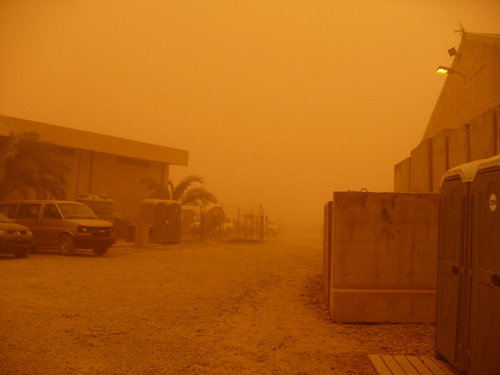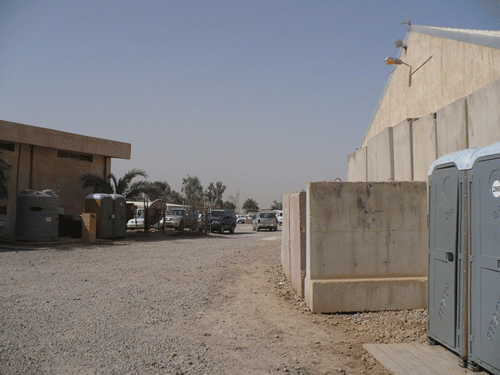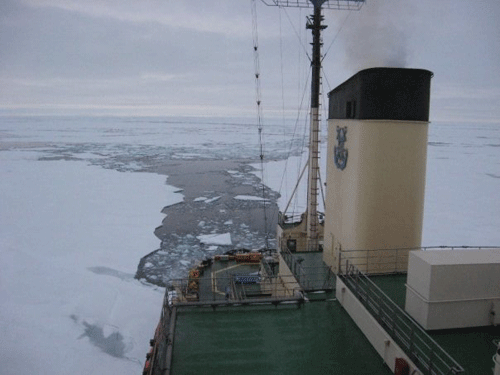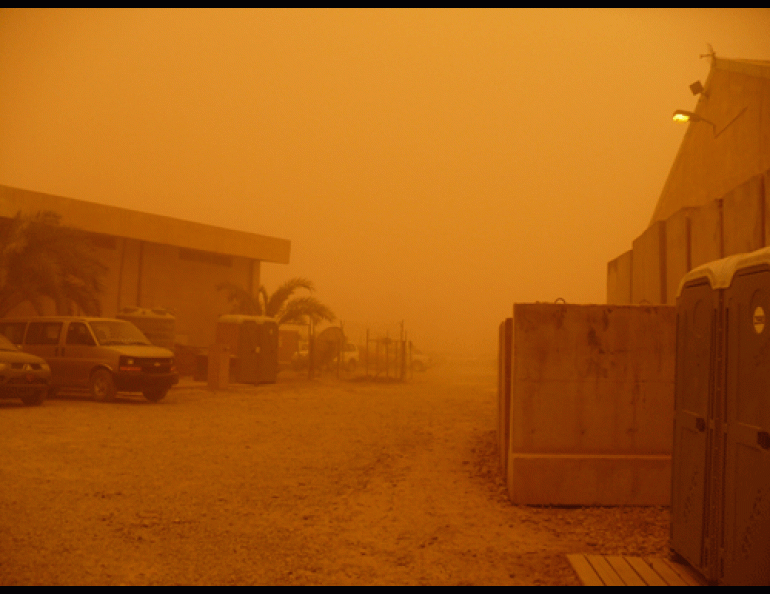
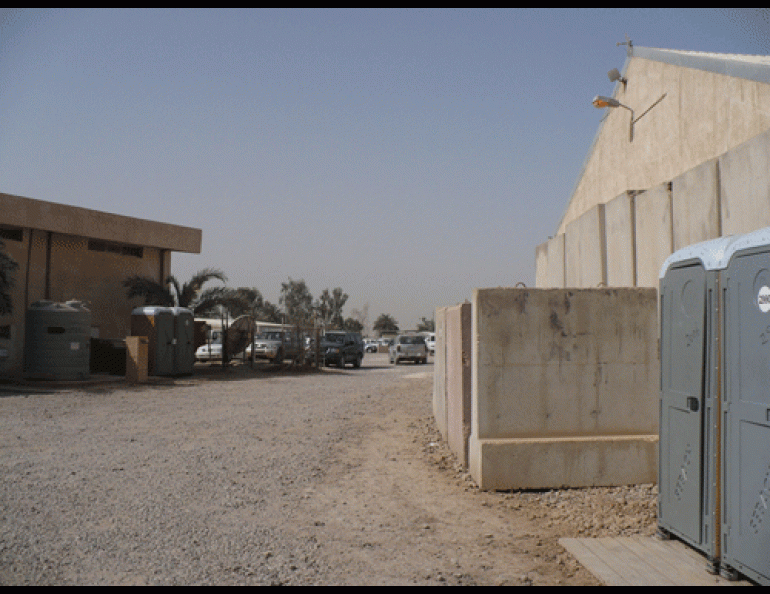
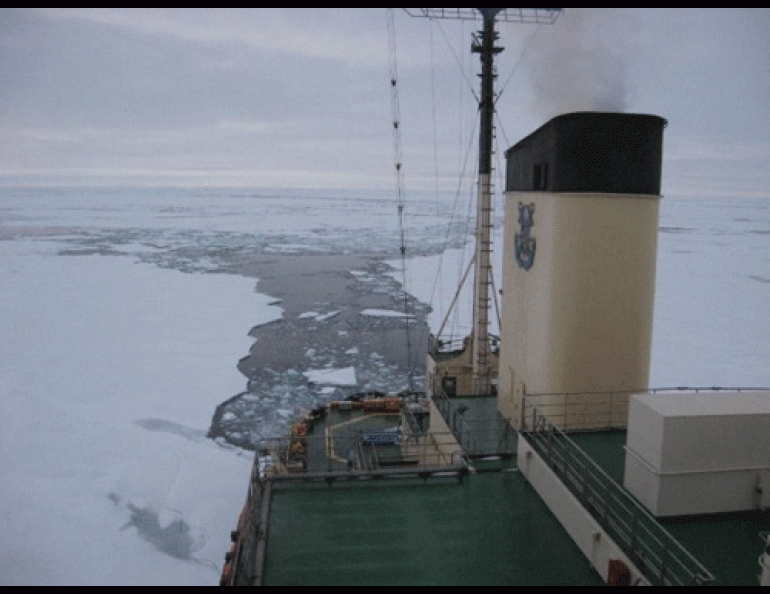
Baghdad air not so good; Arctic ocean cooling in places
Soldiers in Iraq are breathing bad air, according to an Alaska researcher who for almost two years has monitored air quality in two camps in Baghdad. In addition to small particles blown into the air during sandstorms, soldiers at the camps are breathing in tiny lead particles, probably the result of burned leaded fuel.
“We exceed the U.S. ambient air quality lead standard almost all the time in Iraq,” said Cathy Cahill of University of Alaska Fairbanks’ Geophysical Institute.
Every three weeks, Cahill receives in the mail samples coated with a sticky film that captures particles from the air at the Army camps. A few soldiers operate the air samplers for her, and she mails the clean films back with reindeer jerky and smoked salmon tucked in the boxes. Her study is a joint venture with the Army and Navy to see what soldiers are breathing in combat zones.
“It’s bad,” Cahill says. “There’s more dust in the fine (breathable) fraction than we thought, and there’s the airborne lead and manganese.”
Cahill’s goal with her studies is to identify hazards to keep soldiers—including her neighbors at Fort Wainwright in Fairbanks—safer. With the help of the military, Cahill is expanding her efforts, setting up four more sampling stations at bases in Afghanistan, and beginning to monitor the air around military burn pits, where contractors burn the trash from the bases, sending inky black smoke into the sky.
* * *
Recent, end-of-arctic-summer ship journeys have helped scientists discover that waters of the Arctic Ocean have cooled, at least in the area they surveyed.
“Everywhere in the Nansen Basin except Fram Strait, regional temperatures are colder than they were two, three, four years ago,” says Igor Polyakov of the International Arctic Research Center at UAF. “There’s a steady cooling tendency at all the locations we measured.”
Polyakov helps coordinate yearly scientific cruises on the Russian Icebreaker Kapitan Dranitsyn. The expedition lasted from Aug. 15 to Sept. 7, 2009 and enabled scientists to measure sea temperatures in a swath of the Arctic Ocean known as the Nansen Basin, located north of Norway and Russia. Researchers found that the 1 degree Celsius warming of recent years had dropped back to near normal.
The cooler temperatures come after an inflow of warm water from the Atlantic that started in the early 2000s and peaked in temperature in 2007. The heat of that water “was enough to melt ice over the Nansen Basin,” Polyakov says.
But the warm water didn’t melt all of the sea ice in that large area, because of a cap of buoyant, fresher cold water that insulates the ice from the warmer waters beneath. That buffer, however, gets less effective over time, as the warm waters mix with the colder water above. Along with warmer air temperatures, the warmer ocean “preconditioned” the ice, acting during recent warm decades along with the air to thin sea ice, Polyakov says.
And more warm water is on the horizon, he says. Along with the recent readings that show the Arctic Ocean is cooling north of Eurasia, measurements taken a few weeks ago at Fram Strait—the entrance for warm Atlantic water that penetrates the Arctic Ocean—show that more warm water is probably on its way north.
“In the next year or two, we may see the Nansen Basin getting warmer again,” Polyakov says.
The source of the warm water could be a massive cell of ocean circulation in the Atlantic Ocean south of Greenland and east of North America. Though it’s tough to say how the warmish water emissions are related to climate change, researchers are finding a connection between the temperature of water that enters the Arctic through Fram Strait and the temperatures within the Arctic Ocean a few years later.

